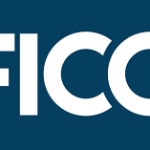The Introduction of Google’s New AI Model
In a groundbreaking development, Google has recently introduced a new artificial intelligence model that has the capability to remove watermarks from images. This new technology represents a significant advancement in the field of image manipulation and has the potential to revolutionize the way we interact with digital media. In this article, we will delve into the details of this new AI model, explore its implications, and discuss the ethical considerations surrounding its use.
The Functionality of the AI Model
The AI model developed by Google leverages advanced machine learning algorithms to analyze and manipulate images with watermarks. By training on a vast dataset of watermarked images, the AI has learned to accurately identify and remove watermarks from photos, leaving behind a clean and seamless image. This process is achieved through a combination of image recognition, pattern detection, and inpainting techniques, allowing the AI to intelligently fill in the missing details where the watermark once was.
The Implications of the AI Model
The introduction of this new AI model has far-reaching implications across various industries. For photographers and content creators, the ability to remove watermarks from images could pose a threat to the protection of intellectual property rights. Watermarks are often used as a means of copyright protection, and the ease with which they can now be removed raises concerns about image theft and unauthorized use.
On the other hand, the AI model could also have positive implications for image editing and restoration. It could be used to clean up old photos with watermarks, enhance the visual appeal of images for marketing purposes, or even assist in forensic investigations by removing obstructive watermarks from evidence photos.
Ethical Considerations
The development and deployment of AI models like the one introduced by Google raise important ethical considerations that must be carefully addressed. One of the key concerns is the potential for misuse of the technology, such as in the unauthorized removal of watermarks for malicious purposes. This could lead to copyright infringement, plagiarism, and the devaluation of creative work.
Additionally, there are broader ethical questions surrounding the impact of AI on society as a whole. As AI systems become more advanced and capable, they have the potential to influence public perception, shape narratives, and even manipulate reality. It is crucial for developers, policymakers, and users to engage in discussions around the ethical use of AI technologies and establish guidelines to ensure their responsible deployment.
The Future of Image Manipulation
As AI technologies continue to evolve and improve, we can expect to see further advancements in the field of image manipulation. The ability to remove watermarks from images is just one example of the countless possibilities that AI opens up for creative expression, visual storytelling, and digital innovation.
In the coming years, we may witness the development of even more sophisticated AI models that can seamlessly edit, enhance, and transform images in ways we never thought possible. While this presents exciting opportunities for artists, designers, and photographers, it also underscores the importance of upholding ethical standards and protecting the integrity of creative work in the digital age.
Conclusion
Google’s new AI model that can remove watermarks from images represents a significant milestone in the field of image manipulation and artificial intelligence. While the technology holds great promise for enhancing visual content and streamlining creative workflows, it also raises important ethical considerations that must be carefully considered.
As we navigate the evolving landscape of AI-driven image editing, it is essential for stakeholders to collaborate, engage in dialogue, and establish best practices to ensure the responsible and ethical use of these powerful technologies. By fostering a culture of transparency, accountability, and respect for intellectual property rights, we can harness the potential of AI for positive impact and innovation in the digital realm.







Leave a Reply